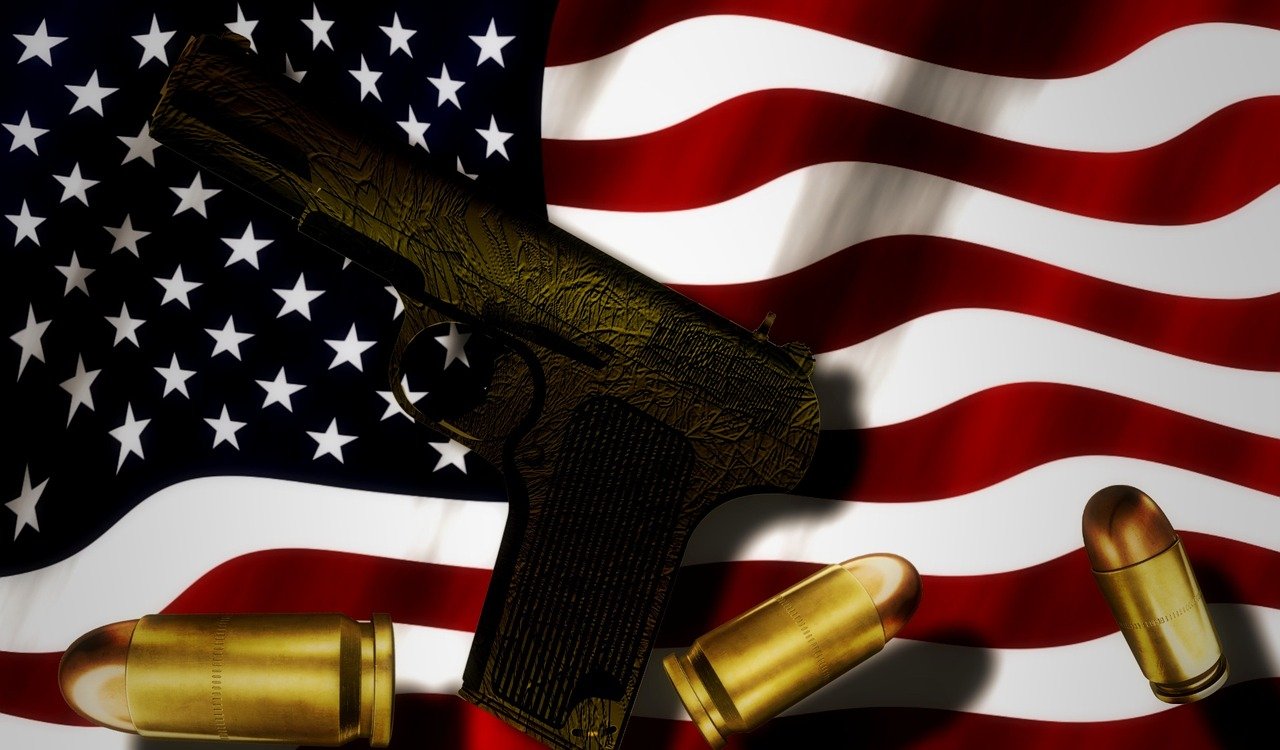I’ve been thinking about this article for a long time. I’ve been thinking about this article since 10 Black people were killed in a Buffalo supermarket, since 19 students and 2 teachers were shot dead at Robb Elementary school. I’m writing this article a few hours after at least 6 people died and 24 were injured at a 4th of July parade in Highland Park, Illinois. This horrific shooting comes mere weeks after the Supreme Court’s decision to overturn New York’s strict handgun laws in New York State Rifle & Pistol Association v. Bruen.
Guns have more rights than women in this country. Since 2014, the parody newspaper, The Onion, has published the same satiric headline 21 times. The headline, “‘No Way to Prevent This’ Says Only Nation Where This Regularly Happens,” is jarring, accurate, and as of today, unfortunately applies to yet another horrific tragedy.
Leaders in the United States have continued to give their “thoughts and prayers” after each mass shooting, and each time, gun control advocates believe this time will finally be enough to inspire change. Yet, after each mass shooting, after each life is lost, the conversation often returns to how this problem is only caused by the mental health crisis or how schools have too many doors.
This summer I have had the pleasure of interning at The Violence Project, a nonprofit research organization that studies gun violence and mass shootings with the goal of using research to affect policy and create change. By coding school shooting threats and mass shooters, I have become more familiar with behavior patterns exhibited by mass shooters. Through training by experts and conversations about this work, I have gained more insight into how policymakers might use these patterns to enact effective policy. The answer is not hardening our schools or minimizing the number of doors on a campus. The answer is fostering positive relationships between students and trusted adults while emotionally investing in our children.
In 2019, Texas governor Greg Abbot signed into law legislation to “harden” schools against outside threats. Following the Santa Fe high school shooting, this legislation would allow teachers to be armed with guns and provide for heightened security in school buildings. Clearly, this legislation is not the answer, as the Uvalde shooter entered the building through an open back door. A Texas Tribune article about the ineffectiveness of hardening schools states, “Even with more funds and better enforcement of policies, experts have said there is no indication that beefing up security in schools has prevented any violence.” According to The Violence Project: How to Stop a Mass Shooting Epidemic, school security officers could be a hindrance, especially for suicidal students. In their book, authors Jillian Peterson and James Densley interview a school shooting perpetrator. The perpetrator spoke of her motives for a school shooting. “I wanted to die. I was trying to commit suicide,” she said. When asked why she “picked the school across the street,” the perpetrator replied, “Because I knew that if I fired on the school the police would show up, and they would shoot me and kill me” (25). Authors Peterson and Densley state “A shooter may actually be drawn to a location like a school precisely because there is an armed officer on the scene, given that they wish to be killed” (156).
In the case of today’s rooftop shooter, it is clearer than ever that our federal policy needs to focus on grassroots solutions in schools and communities, not on physical barriers like doors or heightened security around every community event. Especially following SCOTUS’s decision to loosen gun regulations, it is even more prudent that students, adults, citizens, and legislators pay attention to the research we now have available to the public to change our policy and actually prevent mass shootings. Despite 40% of Republicans thinking that mass shootings are ‘unfortunately something we have to accept as part of a free society’, mass shootings are indeed preventable, and we have the research to prove it.
According to The Violence Project book, 85% of mass shooters are insiders, meaning they are people we know: people we work with, go to school with, people who are living our same lives and going through the same drills we do. Mass shooters are not monsters who step into schools or workplaces without any prior connection to the location. This data point is crucial, especially in preventing school shootings, because what lawmakers and gun advocates don’t seem to realize is that school shooters are/were students themselves. They went through the same lockdown and active shooter drills as the rest of the student body, therefore rendering these drills ineffective. Instead of providing billions of funds to school security, we should be providing funding for crisis de-escalation and student counselors and mental health resources.
Existing programs and organizations such as The Violence Project, Everytown for Gun Safety, and the Sandy Hook Promise already have answers for what we need to do to stop this epidemic of violence. Simple campaigns from Sandy Hook such as “Start with Hello” and “Know the Signs” can save lives. The Violence Project’s Off Ramp website has training in crisis de-escalation and national and state resources for advocacy, mental health, and crisis intervention. We have the research, we have the resources, and by now, we should have the motivation to fight. We need to elect representatives who prioritize human lives over guns. We need to vote in the midterm elections. Let Highland be the last one.


